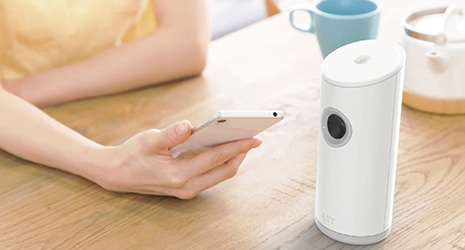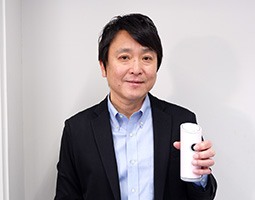March 2020
Painless Blood Sugar Testing

A Japanese venture company has developed a device that can test blood sugar levels without drawing blood from patients.
According to surveys conducted by Japan’s Ministry of Health, Labour and Welfare, Japan’s diabetes patients numbered 3.17 million in 2014 and 3.29 million in 2017. Meanwhile, the International Diabetes Federation has said that the total number of diabetes sufferers worldwide numbered 460 million in 2019, with the total expected to balloon to 700 million by 2045.
Diabetes can largely be categorized as either “type 1” or “type 2.” Type 1 sufferers tend to be infants or young people who begin to show symptoms when an autoimmune disorder or other condition causes their insulin-secreting cells to start breaking down. On the other hand, type 2 patients are mostly middle aged or older, with the onset of diabetes precipitated by a combination of hereditary factors, overeating, lack of exercise and other causes.
Many diabetes patients need to use a glucose meter to measure their blood sugar every day. This requires that they prick the end of a finger and wipe the blood onto a testing paper attached to the glucose meter (a sensor). These patients need to withstand the pain that comes from having to draw blood from their fingertips 4-5 times per day. For type 1 sufferers in particular, a single year may see them needled 3,000 times by glucose meters and insulin injections. They also need to keep buying new needles and testing paper, since these are thrown away after each use.

This is where Light Touch Technology Inc., a venture company in Osaka, has developed a prototype blood glucose sensor that can measure blood sugar levels without drawing blood. This is the first non-invasive blood glucose sensor to meet the measurement precision standards of the International Organization for Standardization (ISO).
Light Touch Technology President Yamakawa Koichi says, “I have a friend whose child was diagnosed with type 1, and it’s through them that I learned what a large burden blood sugar testing places on the individual and the family. This led me to develop a device that can measure blood levels more easily.” Yamakawa has worked on development of state-of-the-art laser technologies for thirty years, as a researcher for the National Institutes for Quantum and Radiological Science and Technology (QST).
The sensor that Yamawaka developed is a circular cylinder only 15 cm long. The small cylinder sensor shines a laser, and by pointing that laser at your fingertip, you can measure the concentration of glucose in your bloodstream. You feel no pain nor heat from the laser, and it completes its measurement in a matter of seconds. It can then send the results of the test to your smartphone.

A paper published roughly thirty years prior was the first to assert that a near infrared laser with a wavelength of 2 microns could be used to measure bloodstream glucose. While many companies have tried to develop a non-invasive blood sugar sensor in the time since, none have achieved practical application. A major reason is that near infrared lasers detect not only glucose, but also the other constituent elements of a patient’s blood. Yamakawa, however, has developed a new extremely high-precision, middle infrared laser with a wavelength of 9 microns which succeeds at only picking up glucose content.
“Many patients have said that they have been eagerly awaiting this device, and that they want me to find a practical implementation as soon as possible. There have also been several inquiries from Asia and the Middle East, both regions which have seen a dramatic rise in diabetes patients in recent years,” says Yamakawa.
To achieve practical application of this technology, Yamakawa established Light Touch Technology in 2017, as a venture spun off from QST. With the cooperation of an NPO that supports type 1 patients and their families, Light Touch Technology are continuing to collect/analyze measurement data and work on R&D to miniaturize the device and gear up for mass production. They aim to begin sales in 2022, once they obtain authorization from the Ministry of Health, Labour and Welfare.
This blood glucose sensor may also prove useful in identifying blood sugar spikes, which are easily overlooked with regular diagnostic methods. A “spike” is when blood sugar rises suddenly after eating. If unaddressed, it can damage blood vessels and advance arterial sclerosis. If people can easily measure glucose using this sensor, it will be much easier to find these symptoms. If this sensor is adopted by hospitals, it will serve to massively decrease the burden that glucose measurement places on doctors and nurses as well.
This technology can also be used to measure cholesterol and triglyceride levels. It may be used to sense airborne pathogens, diagnose illnesses by shining the laser on tears or urine, or in other wide-ranging applications.
“In the future, I would like to see the sensor set up in households and offices, where it automatically informs people about their health,” says Yamakawa.

